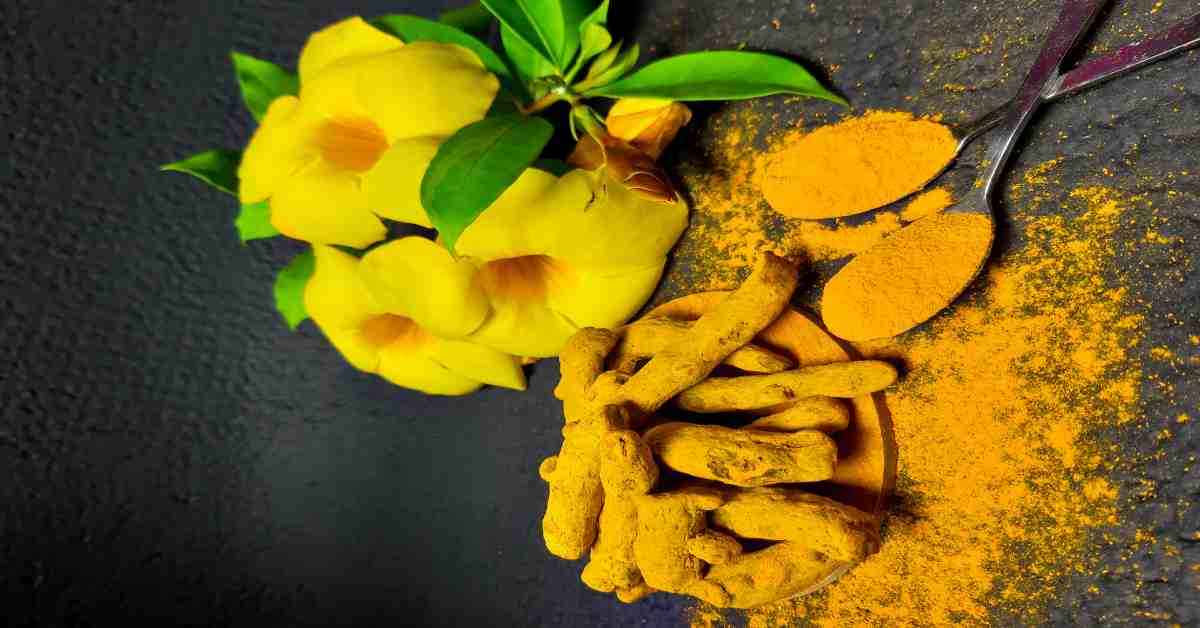Turmeric health benefits – The world’s tropical and subtropical climates are home to the turmeric plant. It is extensively grown in Asian nations, primarily in China and India. The plant has a short stem and can grow up to 1 m tall. It is a common spice that people use throughout the world, but it is most popular in the East. With about 120 species, the Curcuma genus has a long history of using it medicinally.
About Turmeric and its health benefits
- Turmeric is a potent healer present in nature. Curcumin is an active element. It is a natural dye.
- People use it as a spice in many Asian countries, and almost 1 billion people worldwide consume it daily.
- It is a key ingredient in both traditional Chinese medicine and Indian Ayurveda treatment.
- Due to its advantageous qualities, it is also utilized as traditional medicine in Asian nations including India, Bangladesh, and Pakistan in addition to its uses as a spice. While having a similar appearance to ginger root, turmeric root is less fibrous and more succulent, chewable, and crispy.
- The bitter flavor of the fresh root (not the powder) is usually followed by a little sweet and nutty flavor. As a result, eating and chewing it is not unpleasant. Sometimes it is just chewed or diced and added to raw salads.
- The most well-known Curcuma species is Curcuma longa L. (Curcuma; Turmeric), which is most farmed and grows all over the world in warm climates. Due to the flashiness of the tubers, rhizomes, and inflorescence as well as the genus’s exceptionally brief flowering cycle and herbarium preparation, taxonomic identification of this species is highly challenging.
Chemical composition
- Turmeric is high in carbs, protein, fat, minerals, and water. Steam distillation yields essential oils rich in sesquiterpenes, zingiberene, a-phellandrene, sabinene, cineol, and borneol.
- Curcumin, which includes curcumin I, curcumin II, and curcumin III, is responsible for the yellow color. Curcumin dimethoxy and bisdemethoxy derivatives are obtained from turmeric.
- Curcumin is a polyphenolic yellow pigment that is mostly responsible for all activities.
- The rhizomes contain tumerone a, tumerone b, curzerenone, curdione, mono- and di-demethoxycurcumin. Linalool, sabinene, geraniol, -pinene, -pinene, caryophyllene, myrcene, -phellandrene, 1,8-cineole, p-cymene, C8-aldehyde, and methyl heptanone are present in the essential oils of C. longa leaves.
Health benefits of turmeric
Traditional medicine believes that its powder can treat gastrointestinal problems, particularly biliary and hepatic disorders, diabetic sores, rheumatism, and inflammation. A substantial study has shown that curcumin is responsible for the majority of turmeric’s actions. It contains antioxidant effects and is beneficial in illnesses such as inflammation, ulcers, and cancer.
- Digestive disorders: Turmeric acts as a digestive bitter and carminative. It works as a cholagogue, increasing bile production in the liver and encouraging bile excretion through the gallbladder.
- Anti-oxidant activity: Curcumin is an effective scavenger of oxygen-free radicals. Its antioxidant activity is comparable to that of vitamins C and E. It can preserve lipids and hemoglobin from oxidation.
- Anti-inflammatory effect: Curcumin is a powerful anti-inflammatory with particular lipoxygenase and COX-2 inhibitory effects. In vitro and in vivo investigations have shown that it can reduce both acute and chronic inflammation.
- Liver disorders: Turmeric is good for the liver because of its anti-inflammatory properties. More consumption of herbs and meals in the spring can help to strengthen the liver. Turmeric contains similar liver-protective chemicals to milk thistle and artichoke plants.
Other Benefits of Turmeric
- Effect on the heart: Turmeric is useful in preventing artery blockage, which can lead to a heart attack or stroke in one of two ways. Turmeric lowers cholesterol levels and prevents LDL oxidation (bad cholesterol).
- Antimicrobial and antifungal activity: Turmeric can inhibit the growth of a wide range of bacteria, pathogenic fungus, and parasites. Curcumin also has a moderate effect against Plasmodium falciparum and Leishmania major organisms.
- Anti-cancer activity: Many researchers have investigated the impact of turmeric on the development of cancer. Numerous studies already showed that curcumin can obstruct carcinogenesis at three stages: angiogenesis, tumor promotion, and tumor growth. Curcumin reduces tumor growth and cell proliferation in cases of colon and prostate cancer.
- Menstruation: Try taking turmeric extract or bitters twice a day for two weeks ahead of the anticipated period if you suffer from monthly menstrual cramps. Due to its antispasmodic effects on smooth muscles, turmeric eases menstruation and stomach cramps.
- On Skin: Turmeric adds glow to the skin. Treat dark spots and dark circles. Use turmeric with Multani mitti for a better glow on the skin. It also slows down aging.
